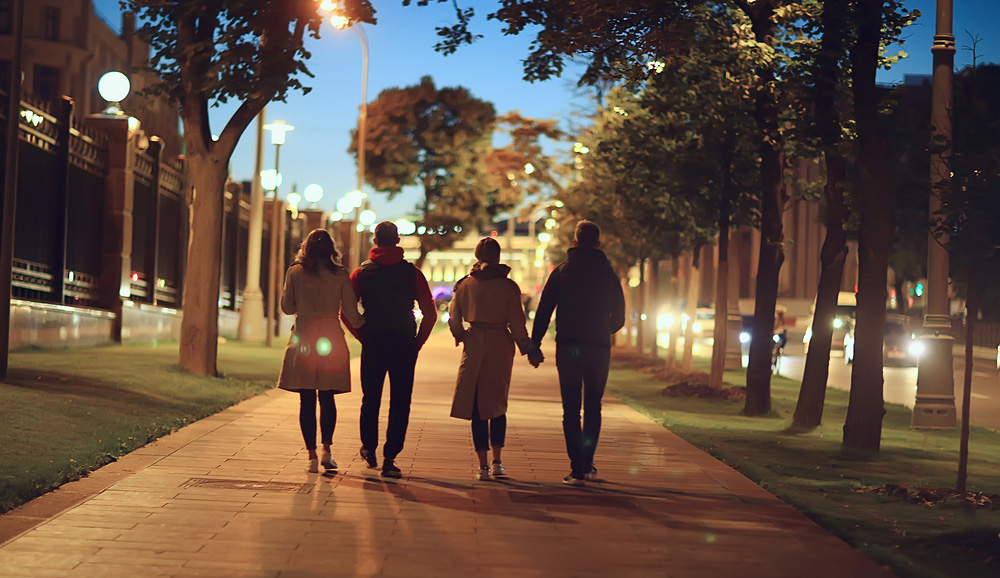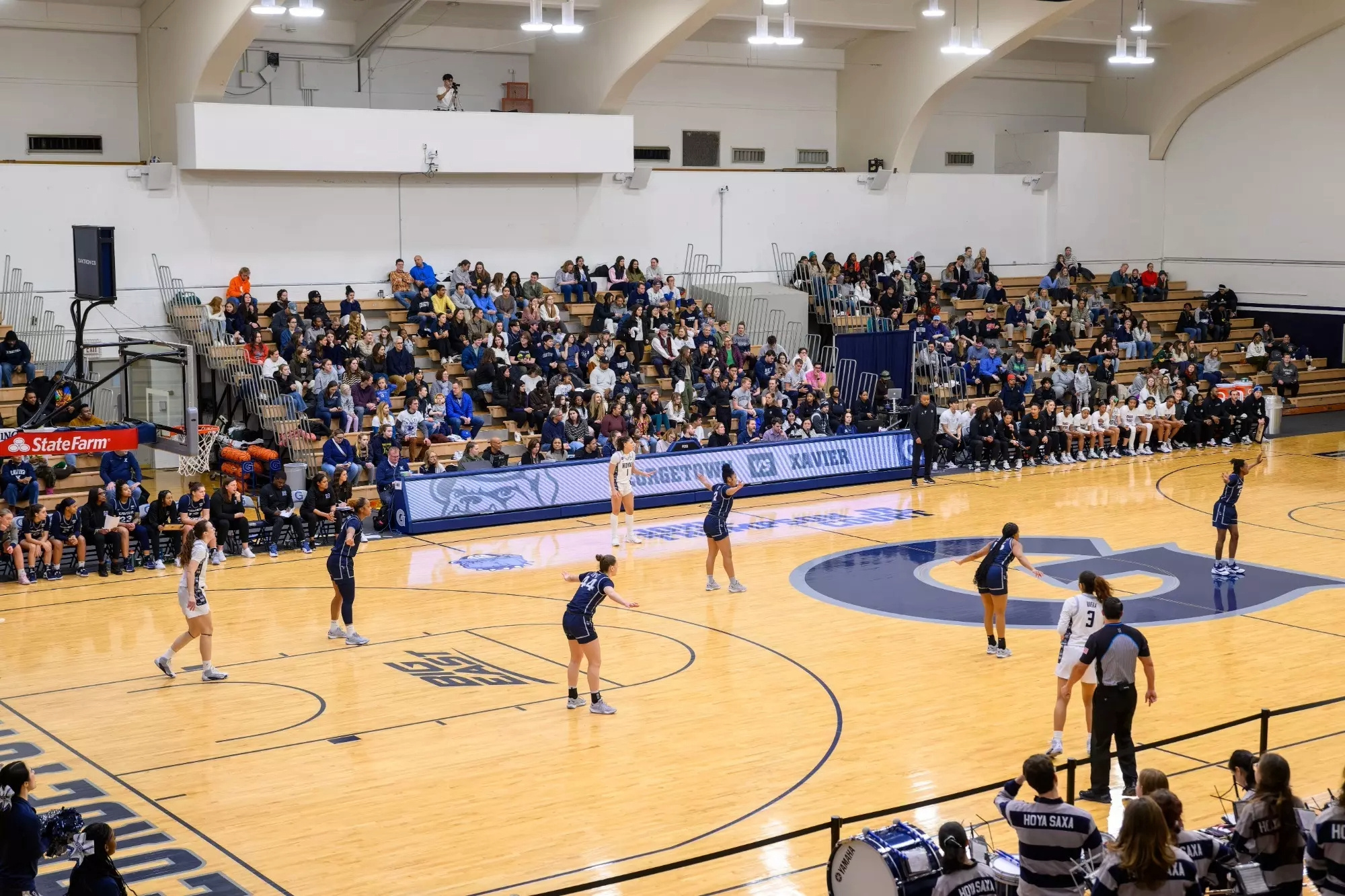Get ready for shorter days and longer nights as Daylight Saving Time will end on Sunday, November 5, 2023 at 2am. In addition to setting your clock back to standard time, goDCgo suggests staying extra alert once the sun goes down so you can stay safe while walking, biking, or driving. While this may or may not be the final ending to Daylight Saving Time (per the Sunshine Protection Act of 2021), we want you to be prepared to take the proper precautions when traveling around the District of Columbia after dark. Review the traffic laws and tips below, so bicyclists, motorists, and pedestrians can coexist peacefully on the road both day and night.
Traveling by Foot
Did you know that DC is the fifth most walkable large city in the US? That means you can go far by foot! In fact, residents can walk to an average of seven restaurants, bars, and coffee shops in just five minutes. And nearly 20% of the city is dedicated to public parks, so you can explore the outdoors and more simply by walking.
Below are some steps to help you step out safely:
- If you are close to an intersection controlled by a traffic signal or police officer(s), use the crosswalk. If no crosswalk exists, use the intersection.
- Look both ways before crossing the street or a bike lane. At intersections, make sure bicyclists and motorists see you before you step off the curb.
- Use pedestrian push buttons and wait for the “Walk” symbol at crosswalks. It’s illegal to enter a crosswalk when a steady “Don’t Walk” symbol or flashing red hand symbol is on.
- Yield to all bicyclists and vehicles if crossing the street mid-block or at any point other than a marked crosswalk or an unmarked crosswalk at an intersection.
- Avoid blocking, standing, or walking in dedicated bike lanes.
- Wear light-colored or reflective clothing to be more visible. Consider carrying a flashlight or blinking light at night.
- Do not walk while being distracted. Especially when crossing the street, remove your headphones and put away cell phones and any other engrossing devices.
- Do not walk in the street or a bike lane if sidewalks are provided.
- Do not suddenly leave a curb, safety platform, safety zone, loading platform, or other designated place of safety and walk or turn into the path of a vehicle that is so close it is impossible for the driver to yield.
Traveling by Bike
In case you missed it, the District recently reached a milestone -- designating 100 miles of bike lanes! That means bicyclists have lots of safe space to get around town. Since 2015, there has been a 60% increase in bike lanes and 4x the number of protected lanes, and we're keeping up the momentum. As one of the top bike-friendly cities in the nation, the District Department of Transportation (DDOT) is working hard to expand bike infrastructure (on- and off-street), but everyone is encouraged to do their part, including bicyclists.
Below are some tips to help you bicycle safely in the city:
- Be aware of your surroundings and watch behind you. Look over your left shoulder to check for vehicles before traveling through an intersection.
- Maintain safe speeds.
- Give an audible signal or ring your bell when passing other bicyclists or pedestrians, and pass only on the left.
- Wear a helmet -- it is strongly recommended for all ages. If under the age of 16, you are required to wear a helmet by law.
- Practice riding during less busy times. Weekends are great for trying out new routes and gaining confidence on the road, especially if riding at night.
- Make yourself more visible by wearing bright colors or reflective gear and adding sidelights or reflectors on wheels.
- Your bike must have a white headlight that is visible for 500 feet and a red reflector or taillight visible from 300 feet when riding at night. If you don't own bike lights, goDCgo can provide you with a complimentary pair. Email info@godcgo.com to make a request.
- Use a stronger headlight (300 lumens or above) when riding on trails since lighting is low and it's much darker at night compared to city streets.
- If using a dockless vehicle or personal bike, be sure to park in well-lit areas.
- If riding on the sidewalk, yield to pedestrians and follow the speed limit of the adjacent roadway.*
- Ride on the right side of the roadway. You cannot ride on the left side against oncoming traffic except when authorized by that section.
- Follow all official traffic signals, signs, and other control devices applicable to vehicles.
- Do not suddenly leave a sidewalk and ride into the path of a vehicle that is so close it is impossible for the driver to yield.
*You are not allowed to ride on the sidewalk in the Central Business District.
Traveling by Car
Despite the city's traffic congestion, 38% of DC households do not actually own a car. But there are still ways to be "car-lite" by carpooling, vanpooling, slugging, carsharing, and ridesharing. Not only does this reduce the number of single-occupancy vehicles (SOV) on the road, but going "car-lite" can save you time and money! Need a bumper buddy? Commuter Connections has a rideshare database that includes a network of more than 18,000 registered commuters who are looking to find a carpool.
Whether you're driving alone or sharing a ride, keep these tips in mind:
- Give full time and attention to properly driving your vehicle. Pedestrians, bicyclists, and scooters may be hard to see in the dark and at dusk, so stay vigilant and keep an eye out for them.
- When turning left or right, check for pedestrians, bicyclists, and scooters.
- When turning right across a bike lane, check for bicyclists and scooters, merge into the bike lane, and then execute your turn.
- Let bicyclists and pedestrians clear the intersection before beginning a turn.
- Make a complete stop and yield to pedestrians, bicyclists, and other vehicles before turning right at a red light (unless signage indicates no right on red turns).
- Check for all traffic before opening your door to avoid "dooring" -- a potentially harmful crash whereby a motorist in a parked car opens the door and hits a bicyclist.
- Do not park or drive in bike lanes. Bikes lanes are reserved for bicyclists.
- Stop and yield to people in the crosswalk until they have reached the opposite sidewalk or safety island, whichever is nearest.
- If stopped at an intersection, allow pedestrians to cross the roadway. Drivers behind you should not overtake and pass your stopped vehicle.
- If crossing a sidewalk or sidewalk area, stop and yield to any pedestrian and all other traffic using the sidewalk or sidewalk area.
- Follow posted speed limits to avoid colliding with any person, vehicle, or other conveyance on or entering the street or highway.
- Do not enter an intersection or crosswalk unless there is enough space on the other side to accommodate your vehicle without obstructing the way of other vehicles or pedestrians.
- Do not stop, stand, or park a vehicle in any of the following places, except when necessary to avoid conflict with other traffic, in compliance with the law or at the direction of a police officer or traffic control device:
- within an intersection;
- on a crosswalk;
- in any driveway, alley entrance, or other way when stopping, standing, or parking would obstruct the flow of pedestrians or other lawful traffic upon any sidewalk.
Additional Resources
- The Washington Area Bicyclist Association (WABA) hosts a variety of online and in-person classes and events to help improve your biking skills and gain more confidence while riding. All ages and stages are welcome.
- The Street Smart program is a region-wide initiative to protect vulnerable road users by raising awareness about pedestrian and bicycle safety. The region-wide public safety campaign educates drivers, pedestrians, and bicyclists about safe use of roadways in the District of Columbia, Maryland, and Northern Virginia.
- Vision Zero DC is an all-hands-on-deck approach to transportation safety. By the year 2024, Washington, DC plans to eliminate fatalities and serious injuries to travelers of our transportation system through more effective use of data, education, enforcement, and engineering.
- If you experience or see unsafe conditions while walking or biking, dial 311, text DC311, download the DC311 app, or visit the online portal.





.jpg)


